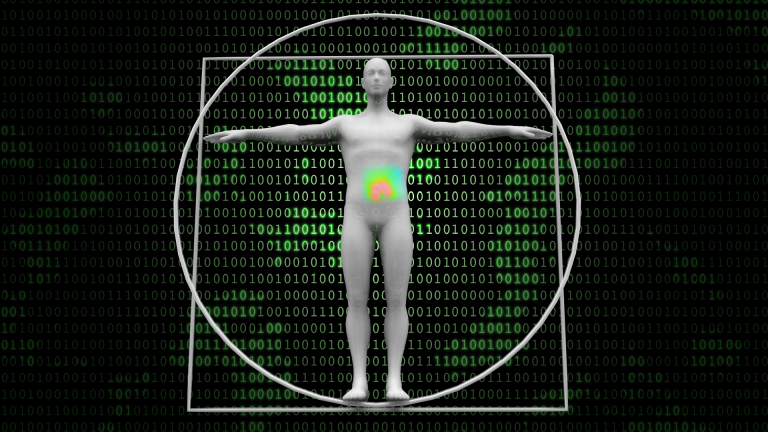MODELING THE EFFECTS OF RADIATION THERAPY
We have discussed the ballistic and dosimetric advantages of hadron beams. They also have a biological advantage that clearly differentiates them from photon or electron beam treatments. This biological advantage is called the Relative Biological Efficiency, or RBE. RBE quantifies the ability of radiation to destroy cells (cancerous or healthy). It corresponds to the ratio of the photon dose to the ion dose leading to a given cell survival. The higher the RBE, the fewer particles are needed to achieve the desired effect, e.g. sterilization of the tumor. It is therefore a fundamental parameter when defining an ion beam treatment.
RBE is naturally modulated by the nature of the incident particles, specifically by their TEL, and by the degree of oxygenation of the tissues. As a general rule, tumor tissues are poorly oxygenated (hypoxia) relative to healthy tissues (normoxia) with a direct consequence, they are very radio-resistant to photons. The use of ion beams, rather heavy, say towards carbon, allows to neutralize the hypoxia effect and to make the tumor more radiosensitive. This is probably one of the major interests of hadrontherapy.
Seen from a distance, the RBE is of the order of 1.1 for proton beams, rises to 3 for carbon ion beams, and then falls back down when the mass of the ions exceeds that of the carbon. However, with some additional details, it is modulated by the TEL. So in reality, it remains globally around 1.1 for proton beams, but progressively increases from 1.4 (at the entrance) to 3 (at the Bragg peak) for carbon ion beams, thus counterbalancing the effects of fragmentation, while maintaining the interest linked to the oxygenation effect of carbon which becomes, de facto, one of the projectiles of choice in hadrontherapy (without being the only one, however).
All this quickly becomes quite complicated since the nature of the tissues encountered (tumor and oxygenation, healthy tissues +/- radiosensitive), their response to the incident ions (varying with depth because of fragmentation), not to mention the variability of this response depending on the individuals (and what we know about them), all come into play. It is to try to understand this complexity that the PMRT program (Platform of Modeling for Radiotherapy) has been developed, supported by the Normandy Region, the ERDF and the CPER Normandy/Seine Valley.

Implementation:
The software architecture of the PMRT is under development. It allows the integration of data and simulation models from various fields (physics, chemistry, biology, medicine) in order to compare them with experimental and clinical observations. This platform will allow the improvement of these models to move towards a realistic simulation of the effects of radiotherapy and hadrontherapy. It will eventually help doctors to optimize treatment protocols.
ArDCore (ArchivingDataCore) is an automated system for pseudonymization, encryption and archiving of medical data for PMRT. It also manages patient consent. Installed on a secure server in a center, its only entry point is a directory where authorized personnel can deposit their documents (images, dosimetry, outlines, standardized pdf reports of examinations). ArDCore will take care of these documents, analyze them to identify the patient, substitute the identifying information by a unique random identifier, compile all the information of the same patient, and encrypt this information by a unique random personal key allowing to manage both data security and patient consent.
rgen2 is a set of functionalities developed under R (R is a powerful data analysis language that can be downloaded under the following link https://cran.r-project.org/). It allows to access in a very simple way the content of dicom files produced in the medical world in order to make advanced calculations on them. It fully manages imagery (CT, MRI, …), dosimetry (rt-dose), contouring (rt-struct), deformations (reg), but can also be used for other types of files. By combining these files, we can define new volumes, new contours, filter 3D images, combine information (CT + MRI + Dose, for example) and use them in feature engineering for machine learning. The integration of rgen2 in the form of a downloadable R package is in progress.